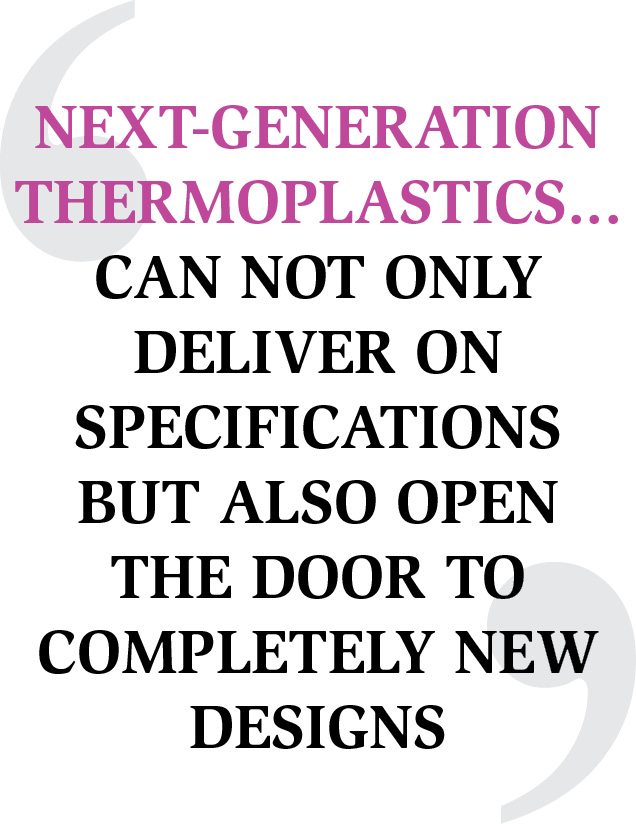We have always talked about how process nodes and newer semiconductors are helping with miniaturisation, but that is not the full story. This interview takes a look at the other side of miniaturisation, of the materials that allow you to build such small-scale objects in the first place. Sridhar N.B., director, sales and marketing (industrial), DSM India Pvt Ltd, speaks with Dilin Anand of EFY
ards higher frequencies. Special laser direct structuring grades is an example of a suitable answer for the challenges of antennae.
Q. How are materials helping with increased miniaturisation of electronics?
A. Miniaturisation and, linked to that, thinnovation, is the design challenge in mobile. Newer materials that have the strength to be used in thinner structures while maintaining strength results in reduced size of components, while putting more features into these. For example, newer connectors have to deliver more power and signals in a small form factor.
One of the best ways to achieve this is through next-generation thermoplastics that can not only deliver on specifications but also open the door to completely new designs and concepts as we have seen in some recent consumer devices.
Q. Could you give us an example of thinnovation making an impact in electronics?
A. When we talk about thinnovation, over the past few years, thickness of smartphones has reduced by 12 per cent per year, on average. One of the latest developments to enable this trend is the new-generation universal serial bus (USB) Type-C connectors.
These connectors need to carry more power than previous-generation connectors in a much smaller form factor. So performance properties of the materials used for holding all conductive elements together are especially critical.
Reliability is a key requirement, so the industry is looking for plastics that are tough, reliable and rigid, with high flow.
Stanyl and Stanyl ForTii are examples of plastics that have been approved by global electronic manufacturers for the USB Type-C line of connectors.
Q. How are the materials used in USB Type-C connectors different from those used in previous-generation ones?
A. Due to thinner walls and a smaller pitch, the thermal plastic material for USB Type-C needs to have better mechanical strength and balance between stiffness and toughness. Due to higher power for charging (USB power delivery), higher comparative tracking index (CTI) is necessary to provide higher safety and minimise risk of fire.
Liquid crystal polymer, or LCP, is the major material used in the previous generation, but this does not work in USB Type-C due to lower CTI.
Q. How do alternative materials compare to the above?
A. Many component producers have begun developments in new USB-C connector designs using LCPs. Traditionally, LCPs were often favoured in thin-wall electronics because of their excellent flow properties. But in many cases, USB Type-C connectors are likely to fail stringent tests with respect to their electrical properties, especially resistance to surface tracking, expressed as CTI, and also mechanical properties. High-performance polyamides 46 and 4T offer the best balance of mechanical and electrical properties and precision moulding.
Q. What are some new designs and concepts possible through next-generation thermoplastics?
A. High-performance materials can enable freedom of design in components like connectors and sockets, as well as antennae and frames.
Antennae need to be thinner and lighter, while still remaining structurally sound. This is especially important given the proliferation and increasing integration of components and the trend towards higher frequencies. Special laser direct structuring grades is an example of a suitable answer for the challenges of antennae.
Q. How does upgrading to a new material help solve industry challenges?
A. Frames, whether for smartphones or tablets, need to be robust, reliable and durable. The real challenge for the industry is finding a way to achieve all this while reducing frame thickness and weight.
 Stanyl ForTii is an example of a thermoplastic resin that addresses key industry trends like convergence and aesthetics. Engineers look for high stiffness and structural rigidity and excellent weld-line strength and low warpage.
Stanyl ForTii is an example of a thermoplastic resin that addresses key industry trends like convergence and aesthetics. Engineers look for high stiffness and structural rigidity and excellent weld-line strength and low warpage.
The material should be easy to process, without the need for secondary operations (like deflashing). Thinner (and lighter) frame walls with excellent durability are always welcome, too.
Q. What are the parameters that must be considered when looking at materials for printed circuit board (PCB) surface mount technology manufacturing?
A. The first thing engineers consider is the melting temperature and heat-deflection temperature of resin, which needs to be 280°C or higher (260°C is needed for lead-free reflow soldering, but the hot-spot might be 10~20 degrees higher).
Second, after soldering, the component should not warp, which can lead to loose-contact with the board, affecting final PCB performance. Hence, the material should have balanced stiffness as well as low internal stresses after moulding. So materials with higher flow and good weld strength are preferred.
Q. What should an engineer consider when looking at materials for connectors?
A. There is no standard answer for connector requirement because it depends on connector design. Some connectors need to have higher toughness (elongation at break or EAB) due to hinge function/design, while some connectors need to provide high mechanical strength. For the miniaturised connector, high flow and low warpage are also needed.
The second key criteria is how the component is soldered on to the PCB—surface mount or pin through hole—based on which you need to select the material with the right melting point, so that it is compatible with the soldering process. Choice of material can range from standard engineering plastics like PBT/PET/PA6/PA66 to high-heat resins like PA46/PA4T/PPA/LCP.







